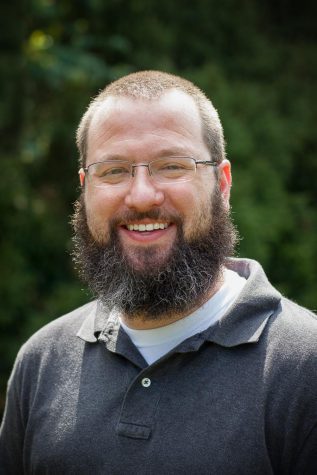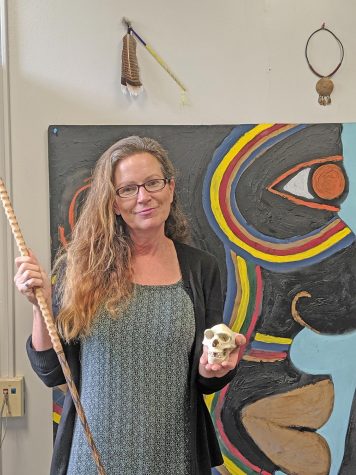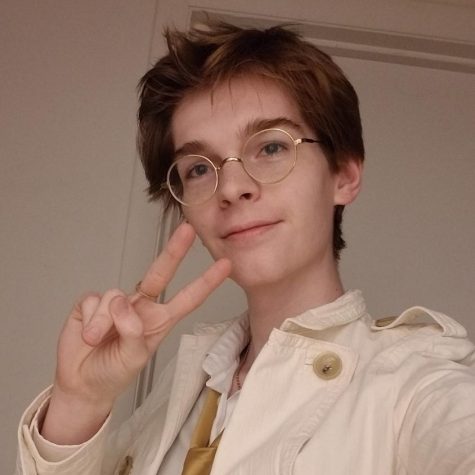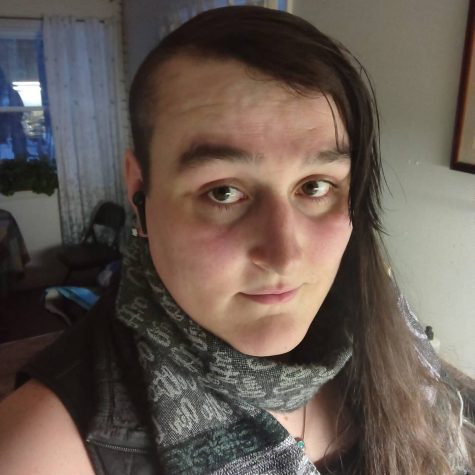Castleton faculty seeks optimization pause in letter to chancellor
Calling for a pause in the ambitious optimization timetable for the launch of Vermont State University in the fall of 2023, and announcing their intent to withdraw from ongoing talks with NVU and Vermont Tech faculty, 55 full-time Castleton faculty, sent a letter Oct. 26 to Sophie Zdatny, the Chancellor of the VSCS.
The letter expressed concerns about the timeline, the difficulty of the work, the impact on students and the potential costs.
“The Castleton University faculty,” the letter begins, “are united in the opinion that the transformation of the VSC system, as it is currently proceeding, is on a path that will irrevocably damage the very institutions it purports to be ‘saving.’
“We see the quality of academic programs being threatened…programs being eliminated or diminished in a haphazard manner…conclusions being reached before data are analyzed…ignorance of why students apply to our institutions, and why they choose to stay.”
Pressing pause or pressing forward?
Castleton has emphasized that they are requesting a pause, not a full stop, in the transformation.
“We want to make clear that we’re not anti-merger or transformation,” said Preston Garcia, chair of the faculty assembly at Castleton University. “We just think this process is happening way too fast, and we’re seeing that now because we’re into the detail phase.
“The detail phase is taking a lot more time than I think the faculty recognized, than the Chancellor’s office recognized, and certainly than the Legislature recognized when they imposed this timeline.”
According to Garcia, a pause would allow the faculty involved in this process to make decisions without rushing or cutting corners. Furthermore, he said it would allow for the faculty and decision-makers to clearly define the intentions for the end result.
However, NVU-Johnson’s Faculty Assembly Chair Janet Bennion disagreed with the need to halt the transformation progress altogether. “We’ve got to be on board and work with [adminstration] and tell them what we need along the process, otherwise we will lose our voice,” she said.
“I believe in protest; I’ve been on strike before,” Bennion said, “but this is something different…In fact, three campuses are saying no to this… and for [Castleton] to take this on as if they’re representing all of us is wrong.”
She mentioned that if faculty refused to do optimization work altogether, then an outside entity would likely be brought in to do it for them. “The better path is to continue to work with administration, identifying our needs, yes, but also making sure that we have a hand in the process,” she said.
Having already experienced
one unification, Bennion said it’s far more important to stay at the table and help make decisions than it is to deny its occurrence and refuse to take part.
“We went through this before; we know intimately what you’re going through,” Bennion said, referring to Castleton. “It’s uncomfortable–transition is painful, and with that understanding comes the knowledge that this is what has been decided by the Legislature, and this is our reality.”

The mandate from Montpelier
“The state gave us a mandate to transform the system, unify the schools, and solve the structural deficit,” said VSCS Chancellor Sophie Zdaty. “In return, the state has committed to increasing our funding [and] has sponsored $20 million in transformation costs.”
When any company or organization undergoes a rebranding, the associated costs rack up quickly, and the Castleton faculty expressed reservations regarding use of the budget.
“We’re concerned about the cost of it all,” Garcia said. “How much is it actually going to cost to get new uniforms, new signs, new websites, all of that? NVU just went through this two years ago.
“The money should be going towards students and reducing costs for students to attend. Everything should be student-focused, and this is going to be focused on–well, what I don’t think is necessary.”
According to Garcia, minimal data regarding the financials of the transformation have been revealed to the faculty assemblies. He said this type of data would be crucial in determining the feasibility of a pause in the process.
“We’re asking for data with which we don’t ever seem to be presented,” Garcia said. “There is definitely a concern that we may do something with which Legislature, who actually holds the money, does not agree. And we’re not trying to undermine them.”
Chief Academic Officer for the Vermont State Colleges System YasmineZiesler said that this kind of information has been released to the public by the board of trustees during its October finance and facilities meeting. “There’s really detailed financial information that… goes in much more detail about the history of the system’s finances and where we stand today and what we’re really going to need to do,” she said.
Bennion said, while she understands many of the Castleton faculty’s concerns, her problem lies in the way that they have voiced it. She said that rather than try to solve the problems while continuing important progress, they have simply stepped away and alienated NVU.
“I was disappointed and surprised at the tactic,” she said, “because though I understand some of the frustrations–we all feel that we’re working long hours and that we’re pushed to finish a quality product in very little time–I see the greater goal.
“The long-term objective is to make sure that we’re surviving. It wasn’t so long ago, Jeb Spaulding, the former chancellor, threatened us with elimination… The solution was… that we were going to unify, that we were going to optimize our programs.”
Tense talks and tight timelines
The Legislature gave the VSCS a deadline of autumn 2023 to launch Vermont State University, so its first incoming class will be composed of current high school juniors. To ensure a healthy matriculating class, VSU will need a completed program array with which to recruit students by this spring.
“If we’re going to succeed with that timeline… we have got to work together and expedite this process. There is no room or time for boycott,” Bennion said. “We don’t have time for delays, and what I see in this letter is a delay–an imposed delay that’s doing more harm than good.”
This short span of time has led to the administration to put pressure on faculty to have completed their program optimization by the end of fall semester, but Garcia and the signers of the Castleton letter say that isn’t enough time to do quality work.
“At least from the curriculum standpoint, I think we could get some of this work done in the summer,” Garcia said. “Then we can be ready for it to go right off the bat in September. I can tell you that I know the Chancellor’s Office does not agree with that, because they said that doesn’t correlate with what the Legislature is demanding of us.”
Across each institution, faculty assemblies are the primary force behind creating new courses and programs. Garcia said that in a typical year, the assemblies at each of the schools might approve around two new majors.
“We’re being asked to approve 101 new majors this year,” he said. “It looks like a lot to bring them together, and this is our third meeting of the year and we have not progressed to the point yet to get even one approved.
“So the point is, we’re actually running out of time to do this at the pace at which it needs to be done, and that’s why we’re trying to sound the alarm that this pace is not sustainable.”
Bennion said working with Castleton colleagues over the summer seemed to provide a healthy and collaborative environment, but the added stress of a typical year’s schoolwork has made continuing with optimization difficult and additionally stressful.
“In that way I agree with the letter,” Bennion said. “We do need a little bit more time. There’s the question of compensation… but the CU letter requires us to do a total standstill block.” She said the schools should continue to work on optimization while conveying their needs to administration.
Continuing without Castleton
NVU Provost Nolan Atkins he has been selected to serve as VSU’s provost as well when it launches.
“Some Castleton faculty are still working… with their NVU and Vermont Tech counterparts, and they’re making progress,” Atkins said. “So, there are some areas and some degree programs where the work does continue.”
In addition to programs with cooperative Castleton faculty, Atkins said majors such as Lyndon’s atmospheric science and Johnson’s holistic health, which have no counterparts on the Castleton campus, have continued work as well.
However, “at some point, we’re going to have to get the Castleton faculty, in total, engaged,” he said. “Because for those programs where it’s also offered it Castleton, we’ll need to have the program move through and get approved at their faculty assembly meeting.”
For programs that have a presence on the Castleton campus, but whose faculty are refusing to participate in optimization work, Atkins said it is possible for some work to be continued by NVU and VTC faculty.
“Say that, prior to all of this happening, the faculty had agreed to the program, the courses and so on,” he said. “The NVU faculty could still move forward with administratively filling up the paperwork… Then hopefully, by the time that’s done, we’ll have a resolution to this.
Bennion indicated that this is NVU’s current plan. “We won’t be betraying Castleton if we’re using only the information they’ve already agreed to. I hope that it sounds good to them,” she said. Bennion also noted that Johnson faculty can continue work by writing descriptions and outlines for their own courses.
“While we hope all faculty recognize how essential their contributions are to the program work, ultimately, the important work of transformation needs to move forward even if some faculty choose not to participate in the optimization work,” Zdatny said.
“Understandably, the letter has been upsetting and frustrating for NVU faculty who had been working collegially and productively with their Castleton counterparts on program optimization and faculty governance.
“The commitment of NVU faculty to continue to engage in this work and to move transformation forward, for the benefit of current and future students, is greatly appreciated.”
Bringing them back on board
“One of the things I hear from faculty is [with] all the work they did over the summer, they’ve built some very good relationships with their colleagues. I think there’s a lot of respect and trust among faculty and probably understanding,” Ziesler said.
She said that getting Castleton involved will likely necessitate a large amount of compromise. She indicated that she and Zdatny were involved in discussions of what faculty would need to continue with the optimization work.
“We are doing this with Castleton faculty,” Ziesler said. “I understand that they’ve expressed a concern about pushing pause, but we expect to involve them. They have been working all along; they were part of the all the summer work that happened… They’re an important part of the VSU.”
Bennion agreed that compromise would be essential to continued progress in the program array. While some work can be done without Castleton, the majority of it necessitates collaboration from the entire system.
“The administration needs to come out directly with a compromise statement,” Bennion said. “’Castleton, we hear you. We’re going to give you compensation for your work, and we’re going to delay the process for two months, so that you’re going to work over the break.’”
Bennion added it would be essential for administration to provide data and a thoughtful process behind the program array optimization, as the Castleton letter has requested. She notes, however, that administration also needs to put pressure on Castleton to work with its colleagues at NVU and VTC, emphasizing that withdrawing from the process only makes work more difficult long-term.
“My hope is that, at some point soon, we all can find a way to work together to make this process move forward in a good and positive way,” Atkins said. “The alternative is one that I don’t think any of us would like to contemplate.”

Mission and vision statements
The Castleton letter noted, “A fundamental transformation of the Vermont State College System requires, first and foremost, clear statements of the mission and vision of the proposed unified institution. It has been a year and a half since the system consolidation was announced, and the mission and vision statements were presented only yesterday.”
Some Castleton faculty expressed their alarm by not having seen the final draft of these statements before their approval. However, Ziesler said they were not created without Castleton’s consent.
“There was a representative team with Castleton people involved early on,” she said, “looking at every college’s individual mission, working with the brand, to do some brand research to sort of understand, ‘what are our strengths around mission,’ to then develop some concepts.
“Those concepts were shared with faculty assemblies, they were presented in town hall meetings… so it’s that kind of work, but obviously not everybody can come to every meeting and be part of everything. So sometimes it’s just taking the time to have a conversation, sort of reviewing for people [and] catching people up.”
Communication is key
“[The chancellor] and I both have met with the faculty assembly leaders,” Ziesler said. “We’ve done more conversation with them to kind of review their questions about the financial aspect of this and the reason that transformation is necessary.”
Ziesler said the speed of the transformation process is likely leading to confusion and difficulty communicating. She said transparency is valued, and information is put forward, but with how many and how often changes are occurring, it’s easy for individuals to miss certain details.
“Transparency is very important to me,” Zdatny said, “and I appreciate receiving the feedback that the pace and scope of work has been challenging for many faculty across the three institutions.”
Ziesler said much of her job centers around ensuring the system can provide students with a quality education. This includes giving faculty the support they need to deliver that education.
“The most important thing we need to do is just keep talking to each other,” Ziesler said. “Every conversation I have with faculty is to understand, ‘okay, what do you need, how do we problem solve around this?’”
Bennion said the letter, while attempting to convey an important message, is not addressing the situation tactfully. Ostracizing other campuses and seceding from the transformation process will only make things more difficult moving forward.
“The only good thing is that they have [made] us aware of our need for a bit more time, not to stop the process, but to complete it,” Bennion said. “We need an extended deadline and to provide compensation for those who need it. That’s the good part, but that could have been done in a much more graceful fashion.”
Something new and scary
The fear of transformation is not held exclusively by Castleton’s faculty. Garcia said that many of the university’s students have expressed concerns about the changes being made to their school.
“I think just like faculty, the biggest problem is worry and anxiety,” he said. “They’re worried about the loss of the Castleton brand; that is important here. I don’t want to speak for anyone up at NVU, but they went through losing Lyndon State College and Johnson State College.
“Our students tremendously identify with the name Castleton, our green colors, the Spartans. We have so many student athletes, and right now, they have not been given an answer, because I don’t think they even know yet, but will we still have all the sports on campus? Will we still be the Spartans?
When the NVU merger happened, each campus [retained] their mascots. Now you’re going to merge four campuses. I don’t even know how that works with the NCAA, and no one’s been able to provide that answer.”
Ziesler admitted that this fear is understandable and natural. “With any change… every community has their own reaction to it,” Ziesler said. “Change from the perspective of NVU, where NVU has already experienced unification, is a very different experience than change from the perspective of Castleton.”
NVU, having been formed through a merger of Johnson State College and Lyndon State College in 2018, has fresh memories of the pain that unification can bring.
“Folks are all over the place in terms of where we’re at with this process,” Atkins said. “I think the NVU community is much farther along, because we’ve already been through this.
“I think for Vermont Tech and Castleton, they’re in a different place just because of the fact that this process is new for them. I think part of what the Castleton community, particularly, is experiencing is very similar to what we experienced at Johnson and Lyndon very early in our unification.”
While the initial stages are bound to be difficult and emotional, the goal is for Vermont State University to be stronger than any of its constituent institutions, Zdatny and Ziesler indicated.
“I think it’s a combination of being unaccustomed to transitions, and also this fierce and incredible pride in who they are and their distinct and unique culture,” Bennion said. “I think time is going to be the factor for them to… come to the conclusion that they can keep their unique identity [and] simultaneously work closely with us as they did in the summer.”

Senior, Creative Writing
From Fletcher, VT
Spring 2020-Present
"Call me mommy and I'll bring you blankets and hold you while you cry."

First year student from Orlando, FL.
Working on her second bachelors.
Love poetry, anime, and her dog (mostly her dog).
Dreams of living in a van.

Senior, BFA Creative Writing major from Craftsbury, VT.
Resident Punk Scientist and Basement Medicine Web Wrangler.
I love science and writing, and...



